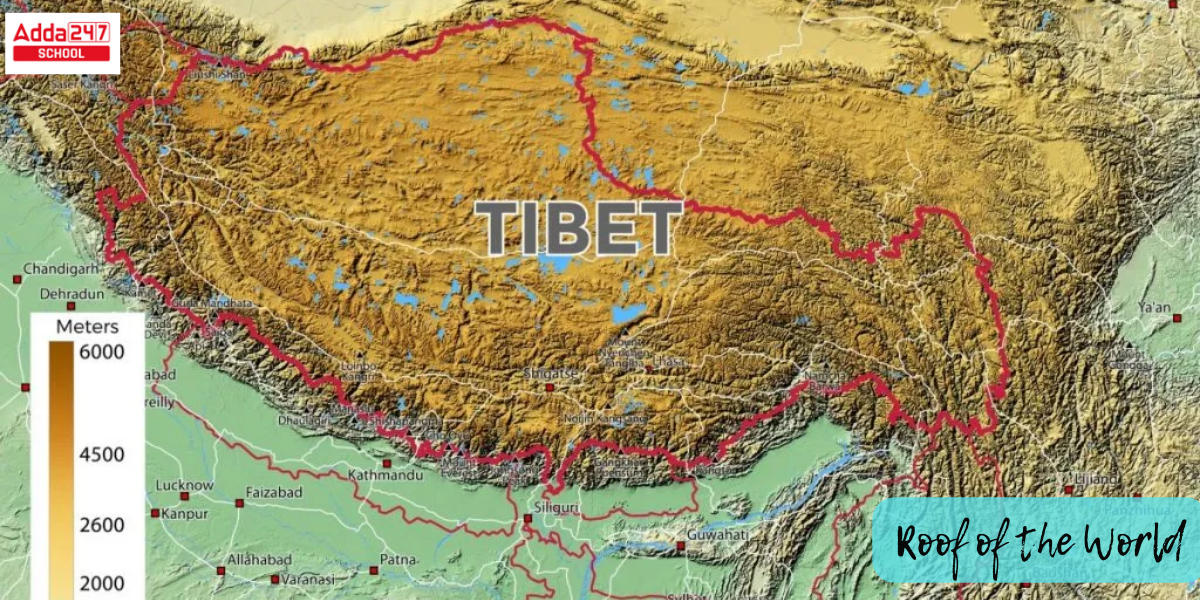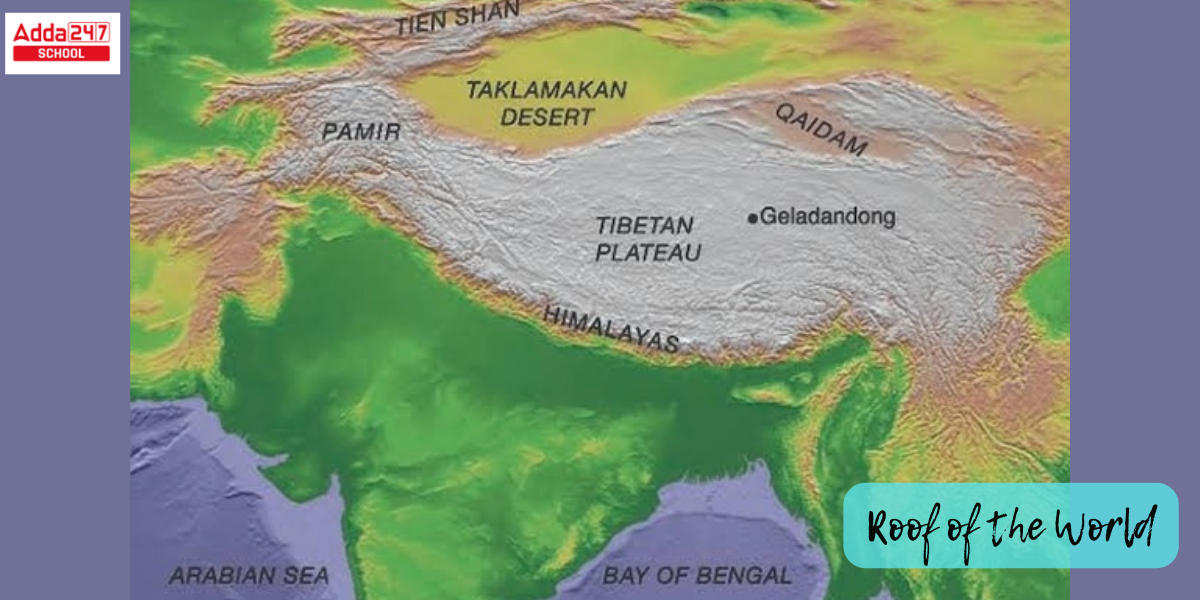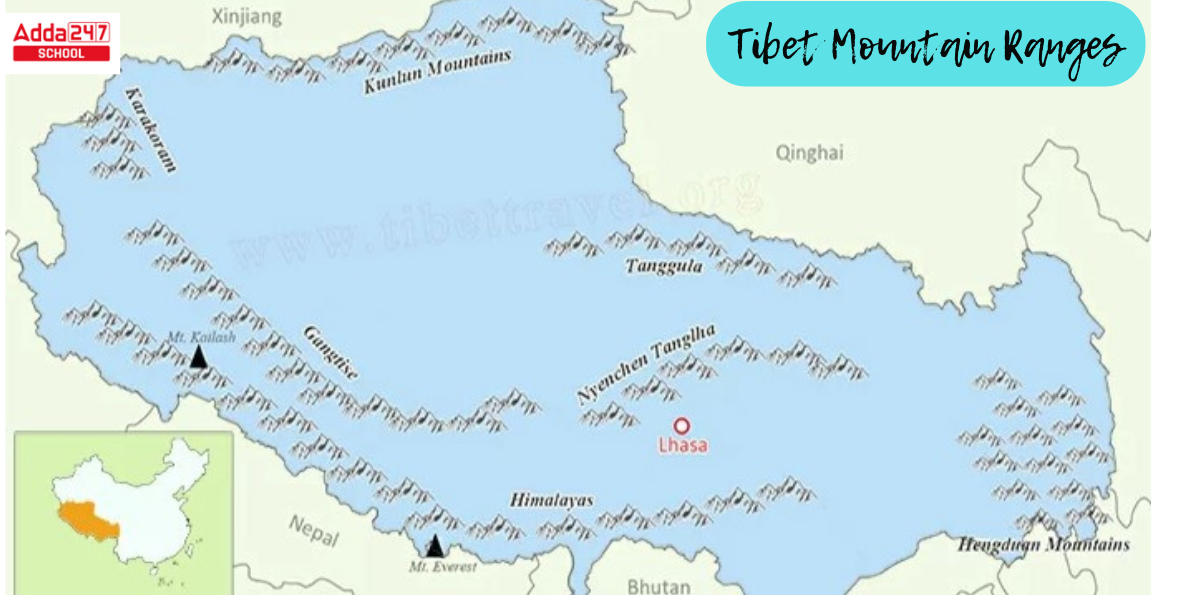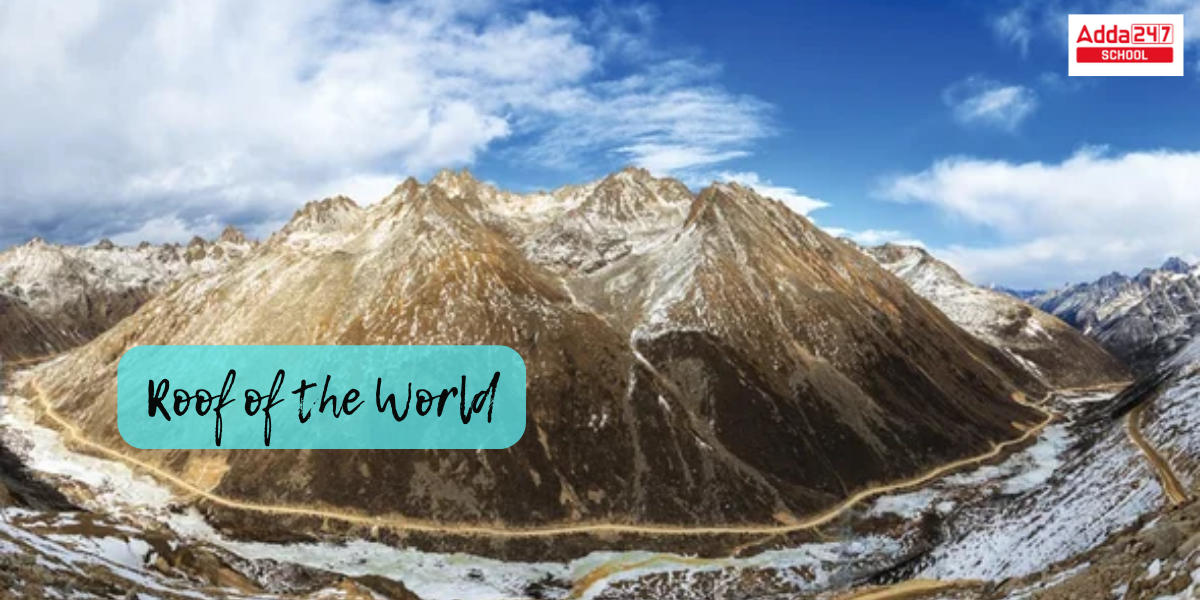Roof of the World: The country Tibet is referred to as the “Roof of the World”. Tibet is renowned as the Roof of the World because the average elevation of the country is around 16,000 feet. Mount Everest, the highest point in the world, is also located in Tibet. Tibet’s mountains have played an important part in its history, with many communities settling within them. The Tibetan Plateau is significant for the environment because it originates from the Indus River. Discover more about Roof of the World by reading the complete article.
Roof of the World
History Behind the name Roof of the World: The Tibetan Plateau is more than 3 miles higher than sea level and is encircled by enormous mountain ranges that encompass Mount Everest and K2, the world’s two highest peaks. John Wood, a traveler well-known for his excursions in the region, coined the phrase “roof of the world” in 1833. The word achieved acceptance among British tourists, with Sir Thomas Gordon using it as the title of his book to help popularise it among the wider public. The name was originally used in written records when referring to the Pamir Mountains, which climb to a height of around 25,095 feet.
Roof of the World Plateau
What is a Plateau? A plateau is a flat, high landform with at least one side that elevates abruptly above its surrounding surroundings. It’s a flat-topped tableland that towers over the surrounding environment. Plateaus are found on all continents and cover one-third of the Earth’s land surface. There are two types of plateaus based on their origin: dissected plateaus & volcanic plateaus.
The Tibetan Plateau is an inter-mountain plateau, meaning it is positioned between mountain ranges. The Tibetan Plateau, located in central Asia, is the world’s largest plateau also named Roof of the World. The region is bounded to the north by the Kunlun Mountains and their related ranges, and to the south and southwest by the Himalayas and the Karakoram Range. Archaeological evidence suggests that some of Tibet’s oldest human settlements developed around 21,000 years ago on the Tibetan Plateau. Some cultures practiced nomadism on the Tibetan Plateau.
Roof of the World Map
Position of Roof of the World: The Tibetian Plateau runs through Tibet, China, and India and covers an area of 2.5 million square kilometers (1.5 million square miles). The size of “Rpoof of the World” is four times the size of Texas in the United States. The Tibetan Plateau is also known as the Tibetan Highlands or the Qinghai-Tibet Plateau (in Chinese). It includes the entire Tibet Autonomous Region as well as much of Qinghai Province, as well as western Sichuan Province in China, and the southern Uygur Autonomous Region of Xinjiang. The northern region of the Tibet plateau, known as Qiangtang, is filled with several saltwater lakes, while the southern section has the upper Indus and Brahmaputra rivers. The Roof of the World Map is shown below.

Roof of the World Pamir to Tibet
The Pamir Plateau is often described to as the “Roof of the World.” It is also known as the “Pamir Knot” because of its peculiar geographical location where many mountain ranges intersect. It is well-known for its stunning scenery as well as its cultural and historical value.
History: The Pamir Mountains were an important section of the Northern Silk Road and played an important role in the region’s history. Several communities battled for control of the area due to its strategic location. Throughout history, the Pamir Mountains have witnessed the footsteps of renowned explorers and adventurers. Renowned travelers like as Marco Polo, Xuanzang, and Ibn Battuta traversed this region, passing behind tales of their interactions with the locals and the breathtaking natural beauty they witnessed.
Geographical Location: The Pamir Mountains are famous for their stunning scenery, glaciers, and various ecosystems. Central Asia is home to the Pamir Plateau. It spans Tajikistan, Afghanistan, Kyrgyzstan, and China, with peaks rising beyond 7,000 meters (23,000 feet). Ismoil Somoni Peak, historically designated as Peak Communism, is one of the most noteworthy mountains in the Pamir range, reaching an astonishing elevation of 7,495 meters (24,590 feet).

The Pamir Plateau is a biodiversity hotspot with a diverse range of flora and wildlife, containing endangered and rare species such as the Marco Polo sheep, snow leopard, and Siberian ibex.
Roof of the World Mountain Range
The Tibet Plateau or Roof of the World is home to numerous prominent mountains with high heights and extensive covering. The mountains of Tibet often form an arc. They are broad in the middle and narrow at the edges.
The north-south and east-west Tibet mountain ranges are two different types of mountain ranges in Tibet. The former includes five mountain ranges and a large portion of the Tibetan Plateau. The Tibetan plateau is home to the following mountain ranges. These mountain ranges go north to south.
- Himalayan mountain range,
- the Karakoram Range,
- the Tanggula Mountains,
- the Gangtise – Nyenchen Tanglha,
- the Kunlun Mountains.
The Hengduan Mountain Range, located in the southeast of Tibet, is commonly referred to as a north-to-south mountain range.

Roof of the World in India
Ladakh, India’s adventurous Union Territory, is known for having the top three highest accessible mountain passes in the world. This is the reason why Ladakh is known as the “Roof of the World.” It stretches from the Karakoram range’s Siachen Glacier in the north to the major Great Himalayas in the south. The desolate Aksai Chin grasslands form the eastern end.
Ladakh is also well-known for its Tibetan and Buddhist cultures. This region is packed with mountain passes, trekking trails, frozen rivers, glaciers, and monasteries, all of which are adorned with snow. Except for near streambeds and marshes, on high slopes, and in irrigated areas, vegetation is incredibly limited in Ladakh. Ladakh has been claimed to have approximately 1250 plant species, including crops.









 Try CUET College Predictor 2025 to Predi...
Try CUET College Predictor 2025 to Predi...
 CUET Result 2025 OUT (Today) @cuet.nta.n...
CUET Result 2025 OUT (Today) @cuet.nta.n...
 Why the Delay in CUET UG 2025 Results? C...
Why the Delay in CUET UG 2025 Results? C...









